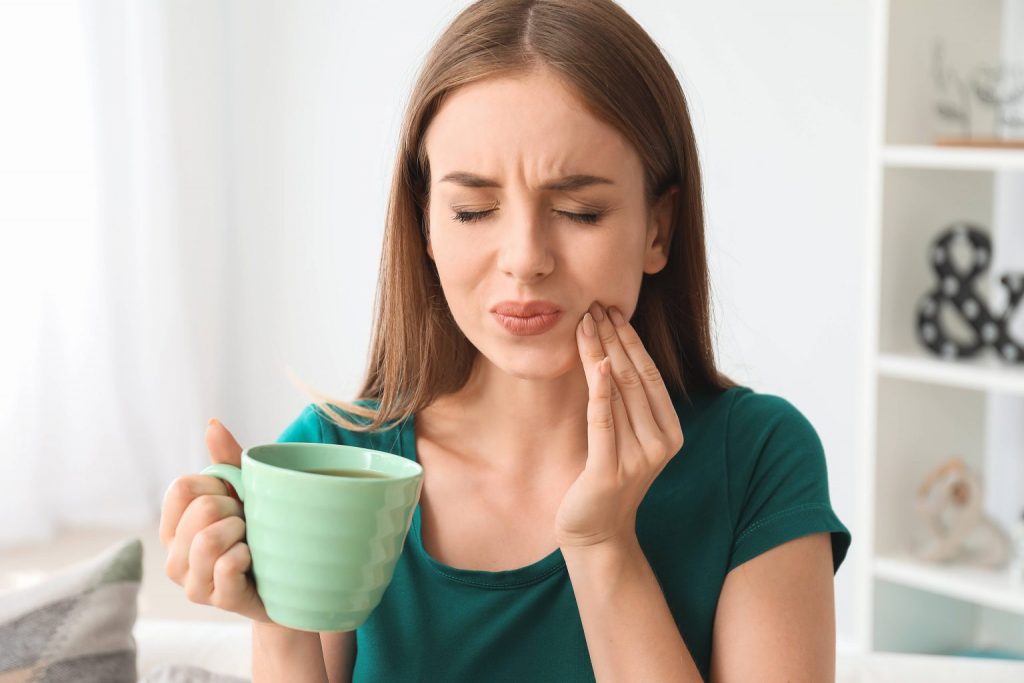Every dental procedure comes with its own set of post-operative instructions, and tooth extractions are no different. While the process might be relatively straightforward, the aftercare can dictate how smoothly and quickly one recovers. This aftercare involves not only keeping the area clean and avoiding certain physical activities but also making informed decisions about one’s diet.
A common question many patients have following a tooth extraction is about their beverage choices – particularly, “Can I drink iced tea?” It’s essential to understand what beverages and foods can aid in the healing process and which ones might pose risks.
Making wise dietary choices isn’t just about preventing discomfort; it’s also about ensuring that the surgical site remains free from complications like infections or delayed healing.
The consumption of iced tea post-extraction brings up various considerations, from its temperature and acidity to its caffeine content. In this blog, we delve deep into these concerns and provide a comprehensive guide on when and how it might be safe to enjoy your favorite cold brew after an extraction.
Stick around as we break down the science and reasoning behind these recommendations, ensuring that your recovery is as smooth as your favorite drink.
Can I Drink Iced Tea After Tooth Extraction?
When it comes to post-surgery dental care, particularly after a tooth extraction, there’s a lot to consider regarding one’s dietary choices. Among these, the seemingly innocent iced tea raises several questions.
For those seeking a quick response, it’s prudent to postpone the consumption of iced tea for at least 24-48 hours following the procedure. But why is this the case?
1. Presence of Caffeine
Caffeine, often found in many teas, especially black and green varieties, can have stimulant properties that increase blood flow. This heightened circulation, especially immediately after an extraction, can enhance bleeding at the surgical site.
Furthermore, caffeine can sometimes reduce one’s ability to sleep, and adequate rest is crucial for the body’s healing process post-surgery.
Recommended: Can You Eat Eggs After Tooth Extraction?
2. Dark Color
Teas, especially darker ones, have tannins that can stain teeth. While the staining isn’t directly harmful, it might cloud the visibility of the surgical site. Being able to monitor the extraction site’s color and condition is vital for ensuring no complications arise. A darkened or stained area can mask potential issues.
3. Sugar Content
Many people enjoy their iced tea sweetened, but sugar can be an adversary when it comes to wound healing in the mouth. Sugary environments can promote bacterial growth, potentially leading to infections. Even if one opts for sugar-free or unsweetened iced tea, it’s still essential to be aware of the drink’s other properties.
4. Cold Temperature
While cold beverages might feel soothing, especially after a surgical procedure, they can also introduce discomfort. The newly exposed socket after an extraction can be sensitive, and introducing extremely cold liquids might exacerbate this sensitivity, causing sharp pain or discomfort.
5. Acidity
Teas, particularly some herbal ones, can have a certain level of acidity. Acids can be detrimental to the extraction site, potentially causing irritation and disrupting the healing process. It’s essential to ensure that the mouth’s pH remains balanced to promote optimal healing.
Recommended: Can You Drink Milk After Tooth Extraction?
While iced tea might be a favorite for many, it’s advisable to exercise caution and avoid it immediately after a tooth extraction. As always, it’s best to listen to one’s body and consult with a dental professional regarding any concerns or potential complications.

General Dietary Recommendations After Tooth Extraction
After undergoing a tooth extraction, adhering to certain dietary guidelines is vital for optimal healing and to avoid complications. Here’s a closer look at what you should consume and what you might want to sidestep, at least for a while.
Liquids to Consume
- Water: Hydration plays a crucial role in recovery. Regularly drinking water helps cleanse the mouth, ensuring that food particles don’t remain trapped near the extraction site. Additionally, staying hydrated can aid in tissue repair and keep swelling to a minimum.
- Warm (not hot) broths or soups: Soups provide a dual benefit. Firstly, they’re gentle on the mouth, eliminating the need for extensive chewing which could disturb the extraction site. Secondly, they offer a rich source of nutrition. Opt for non-acidic broths or clear soups initially before progressing to thicker variants.
- Milk-based drinks: Milkshakes, smoothies, and the like can be a nourishing option. However, a couple of things to remember:
- Temperature: Ensure they’re not too cold to prevent sensitivity or discomfort.
- Consumption method: Drink without using a straw, as the sucking action can risk dislodging the protective blood clot in the socket.
Liquids to Avoid
- Alcoholic beverages:Alcohol can thin the blood, possibly leading to increased bleeding. It can also dehydrate the body and interfere with certain medications, making it a poor choice during the recovery phase.
- Hot drinks: Extremely hot liquids can pose a risk by possibly dissolving or disrupting the blood clot vital for healing. This clot acts as a protective layer, and disturbing it can expose the bone, leading to a painful condition called dry socket.
- Acidic drinks: Beverages like citrus juices, sodas, or anything with high acidity can irritate the extraction site. Acidic environments can also be conducive to bacterial growth, increasing the risk of infection.
Importance of Avoiding Straws
One might not give much thought to the humble straw, but post-extraction, its role becomes significant. The sucking action required when using a straw can create negative pressure inside the mouth. This can potentially dislodge the protective blood clot in the extraction socket. A dislodged clot can expose the underlying bone and nerves, leading to a dry socket, a painful condition that can complicate and prolong recovery.
Recommended: Can You Drink Cold Water After Tooth Extraction?
In summary, the days following tooth extraction are crucial, and your dietary choices can play a pivotal role in ensuring a smooth recovery. While it might be tempting to revert to regular eating and drinking habits, a bit of caution can go a long way in preventing complications. Always keep in touch with your dentist or oral surgeon, and if in doubt, ask before consuming.
How to Safely Introduce Iced Tea and Other Drinks After Extraction
Reintroducing your favorite drinks, like iced tea, post-tooth extraction can be a delightful return to normalcy. However, doing so safely is paramount to avoid unnecessary complications.
Here’s a guide on easing back into your beverage routine post-procedure:
- Wait at Least 24-48 Hours: Patience is vital. Allow the initial healing phase to progress undisturbed. The first couple of days post-extraction is when the surgical site is most vulnerable, so it’s essential to avoid introducing any beverages that could potentially harm the area.
- Gradual Temperature Introduction: While you might crave a super chilly iced tea, start with a mildly cold version to gauge your sensitivity. Over days, as the extraction site heals, you can progressively lower the temperature to your liking. This approach ensures you don’t shock the area, minimizing discomfort.
- Avoid Using Straws: Even after a couple of days, relying on direct sipping rather than straws is advised. While the risk of dislodging the clot decreases as days go by, it’s still safer to avoid straws for a week or until your dentist gives the all-clear.
- Opt for Low or No Caffeine Varieties: Herbal teas like chamomile or rooibos can be excellent alternatives to traditional black or green teas. These varieties are naturally caffeine-free, reducing any potential interference with your recovery.
- Be Mindful of Sugar Content: As your extraction site is healing, it’s still susceptible to bacterial buildup. If you’re keen on having sweetened iced tea, ensure you rinse your mouth with water afterward. Regular and gentle rinsing can keep the surgical area clean, reducing the risk of infection.
- Monitor for Irritation: Always be observant. If, after having a drink, you notice increased sensitivity, pain, or any unusual reaction, it’s crucial to stop and revert to safer beverages like water. Should these symptoms persist, contact your dental professional.
- Ensure Good Oral Hygiene: As you reintroduce different beverages into your diet, maintain a robust oral hygiene routine. Gentle rinsing with salt water, careful brushing around the surgical site, and using an antimicrobial mouthwash (if recommended by your dentist) can aid in keeping the area clean.
- Consultation is Key: While these general guidelines are helpful, individual experiences can vary. Always keep open communication with your dentist or oral surgeon. If you’re unsure about any drink, it’s better to consult with them before consumption.
Recommended: Can I Drink Beer After Tooth Extraction?
To sum up, while reintroducing iced tea and other favorite drinks can be a comforting step post-extraction, doing so with caution ensures your recovery remains on track. Listen to your body, and when in doubt, always err on the side of caution.

Potential Complications to Watch Out For
Tooth extraction, while a common dental procedure, does come with potential post-operative complications. It’s crucial to be aware of these possible issues to identify them early on and seek appropriate intervention.
Here’s a closer look at some complications you should be on the lookout for:
1. Dry Socket (Alveolar Osteitis): A dry socket is among the most common complications after an extraction.
- Symptoms: Severe pain a few days after extraction, a visible empty-looking socket (lacking the blood clot), an unpleasant taste, or bad breath.
- Causes: It occurs when the protective blood clot in the extraction site becomes dislodged or dissolves, exposing the bone and nerve endings.
- Prevention: Avoid activities that can dislodge the clot, such as forceful spitting, smoking, or using straws. Following your dentist’s post-operative instructions is also essential.
2. Infection: While rare, infections can occur, especially if the mouth isn’t kept clean post-surgery.
- Symptoms: Persistent or increasing pain, swelling, pus formation, fever, and an unpleasant taste.
- Causes: Inadequate oral hygiene, pre-existing dental issues, or a compromised immune system can increase infection risks.
- Prevention: Regularly rinse your mouth with warm salt water, maintain good oral hygiene, and ensure you’re following all post-operative instructions provided by your dentist.
3. Prolonged Bleeding: A certain amount of bleeding is expected post-extraction, but if it continues excessively, it might be a cause for concern.
- Symptoms: Ongoing bleeding 24 hours post-surgery.
- Causes: Factors like certain medications, high blood pressure, or disturbances to the extraction site can contribute to prolonged bleeding.
- Prevention: Bite down gently on a gauze pad or a dampened tea bag for about 30 minutes. Keep your head elevated and avoid physical activity. If the bleeding doesn’t subside, contact your dentist.
4. Swelling and Bruising: Some people may experience swelling or bruising around the jawline or cheeks.
- Symptoms: Visible swelling or discoloration of the skin.
- Causes: A natural response to trauma or surgery.
- Management: Apply a cold pack to the affected area in intervals (20 minutes on, then 20 minutes off). If swelling persists beyond 48 hours, you can switch to a warm compress.
5. Nerve Injury: While very rare and often temporary, nerve injury can happen, particularly with the removal of lower wisdom teeth.
- Symptoms: Numbness or tingling in the lower lip, chin, or tongue.
- Causes: The close proximity of the roots of the teeth to the nerves.
- Management: Most nerve injuries heal on their own, but if you suspect nerve damage, consult with your oral surgeon immediately.
While these complications are potential risks associated with tooth extractions, strict adherence to post-operative guidelines can greatly minimize their likelihood.
Recommended: Is Tooth Extraction a Simple Procedure?
If you ever experience symptoms that seem unusual or persist longer than expected, it’s imperative to contact your dental professional promptly. Early detection and intervention can prevent further complications and ensure a smoother recovery.
Conclusion
Navigating the post-operative phase after a tooth extraction requires careful consideration of one’s dietary choices and a keen awareness of potential complications. While indulging in favorites like iced tea may be tempting, patience and adherence to dental guidelines are paramount for optimal recovery.
With the right precautions, one can ensure a smooth healing process and swiftly return to their regular routines. Always prioritize communication with your dental professional and remain proactive in safeguarding your oral health.
